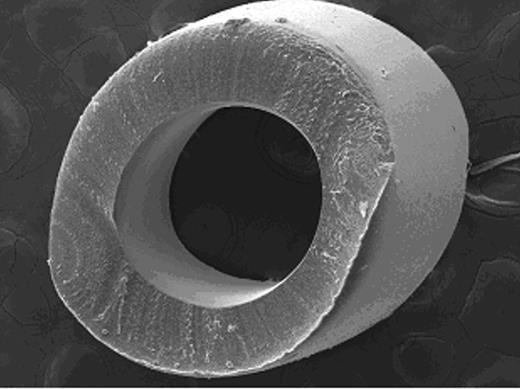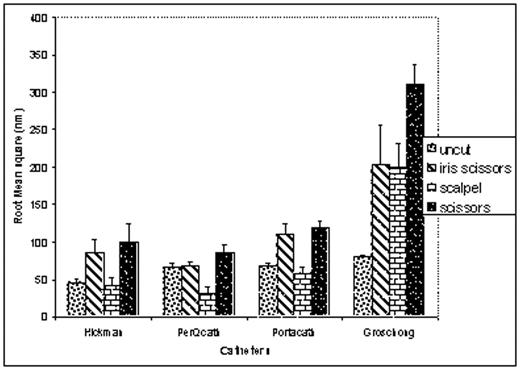Abstract
Thrombosis is a major complication of central venous access devices, and incidence depends on material, diameter, tip position, and tip surface. Catheters are usually cut to the appropriate length for accurate positioning. However, cutting is not recommended as rough surfaces can serve as a nidus for thrombi. This study was done to assess the roughness of the catheter tips as provided by various manufacturers, versus the roughness once cut and handled. Four types of catheters (Groschong, Hickman, Port-a-Cath, and Per Q Cath) were cut by scissors, iris scissors, or scalpel, and handled with debakey forceps, a needle driver, and adsons with or without teeth, to determine the damage created on the catheter. The manufactured tip was compared as a control. Scanning electron microscopy (SEM) was used to do imaging for all samples and roughness and section analysis was quantified using atomic force microscopy (AFM) for the cutting methods. SEM showed that scalpel-cut and manufactured ends appeared smoother relative to those cut with scissors or iris scissors (Fig 1). This complemented the roughness and section analysis by AFM (Fig 2). Catheters handled by debakey equipment and adsons with teeth showed the most roughness, visible as deep holes or a grainy surface when observed by high magnification SEM. Decreasing smoothness of catheters is in the following order: uncut surface, followed by surfaces cut by scalpel, scissors or iris scissors. Handling should be minimized and use of adsons with teeth, needle drivers and debakey forceps avoided, which can leave permanent damage. The least damage appeared to be adsons without teeth. Thus, the cutting of catheters is not recommended since rough surfaces can serve as a thrombotic nidus.
Author notes
Corresponding author



This feature is available to Subscribers Only
Sign In or Create an Account Close Modal